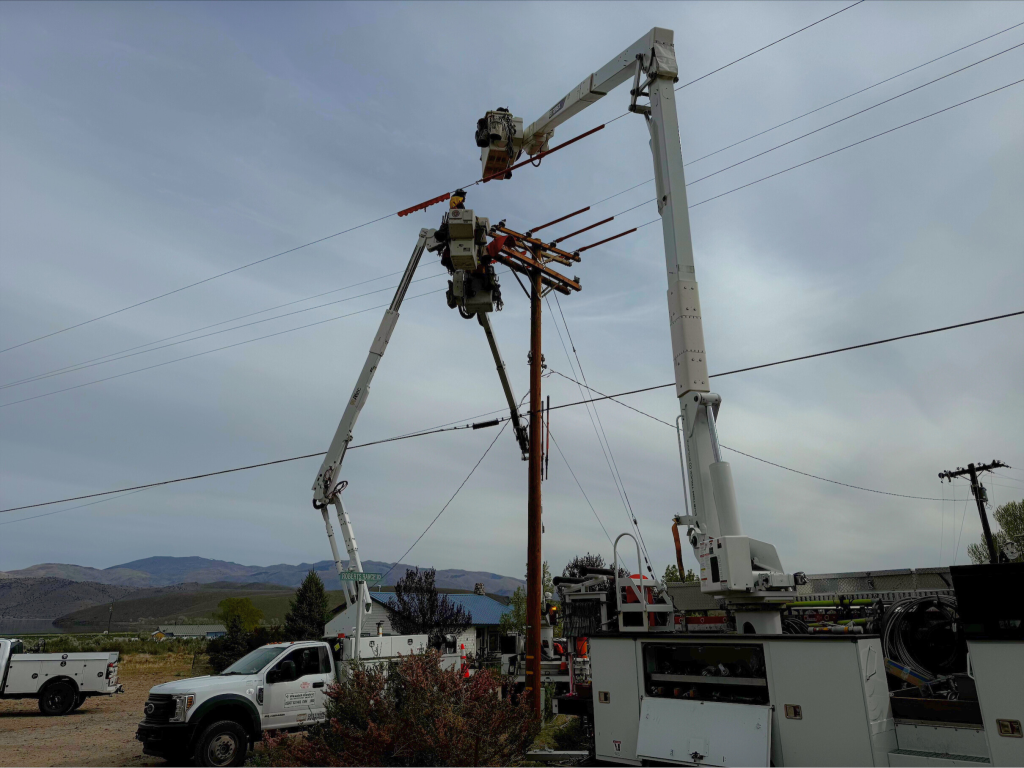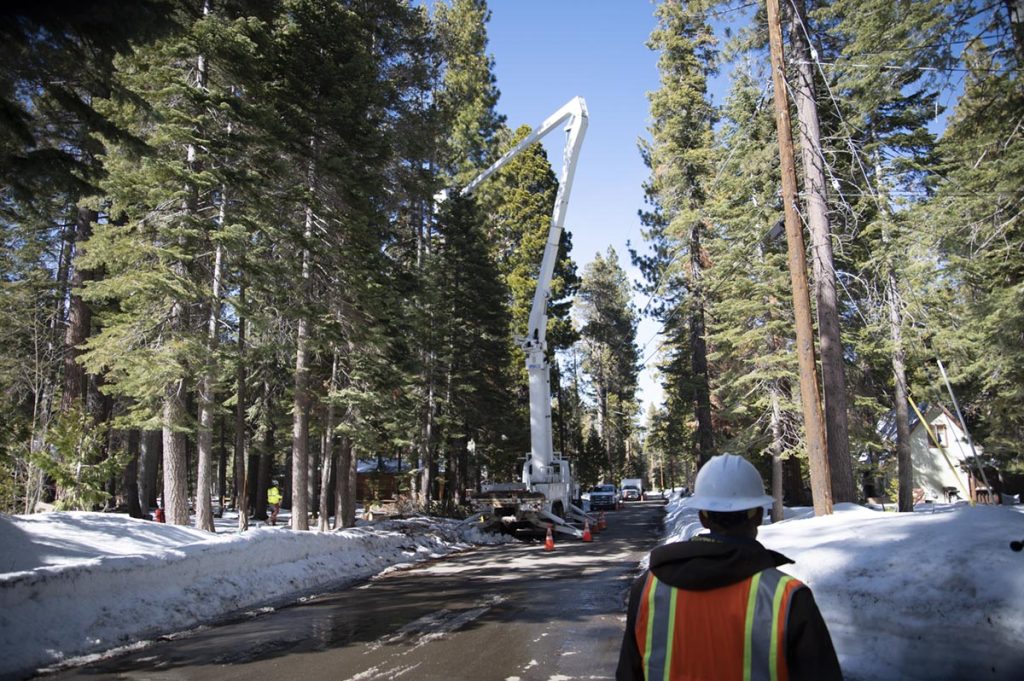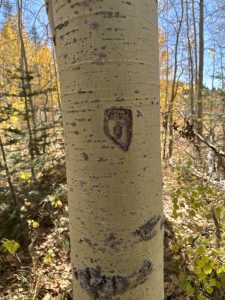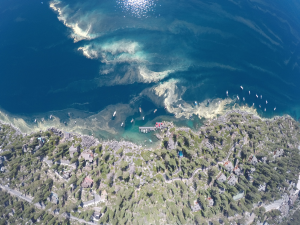Liberty prioritizes wildfire mitigation
When you envision the Lake Tahoe/Sierra area, you may think of the crystal blue lake, surrounded by beautiful forest and mountains on all sides, and the small towns that border the lake or are nestled among the mountains. Most people do.
But what many don’t think about is that the region is considered to have a high wildfire risk due to the dense vegetation and dry brush that characterize much of the landscape, as well as the extreme fire weather conditions.
For Liberty, doing their part to help safeguard the Tahoe/Sierra region and communities from potential wildfires is essential. That means more than just delivering safe and reliable electric service to their customers and communities in the area; it also means reducing the risk of wildfire.

A proactive approach
Liberty has implemented a wildfire mitigation plan that proactively aims to reduce the risk of wildfire ignition through two main initiatives: vegetation management and infrastructure hardening. These two initiatives take place across our Tahoe/Sierra service territory throughout the year, not just during fire season.
“We have a team of experts who work full-time, year-round to develop a strategy that aims to minimize risk for our customers,” says Peter Stoltman, Senior Manager, Wildfire Prevention at Liberty.
Reducing risk from vegetation and promoting forest health
Liberty employs International Society of Arboriculture (ISA) certified arborists to manage the vegetation management program. Throughout the year, the team prunes or removes trees and other vegetation that may pose a hazard to electrical infrastructure.
“There are really three areas of focus,” Stoltman explains. “Our teams work to mitigate vegetation that could grow into our lines and cause an issue, vegetation that is outside our lines but could fall in and strike infrastructure, and remove potential fuels – like dead or dying vegetation – from below our power lines so we’re not contributing to or allowing an excess of fuel loads to build up below and adjacent to our infrastructure.”

In addition to reducing risk for Liberty’s customers and the local communities, this work also promotes forest health in the region.
“We collaborate with the National Forest Foundation and the US Forest Service, among other agencies, to support forest health,” says Eric Schwarzrock, President, California Electric at Liberty. “When we clear out the dead or dying trees around our assets, we’re giving more room to the healthier trees to help them thrive.”
Long-term resiliency
The other initiative included in the wildfire mitigation plan is infrastructure hardening. Liberty prudently invests in maintaining and enhancing infrastructure to increase service reliability and reduce the risk of wildfire.
“A major component of our wildfire mitigation plan is infrastructure improvements, which means upgrading our equipment to be more resilient to extreme weather,” Stoltman says.
Throughout the year, Liberty’s crews replace poles and expulsion fuses, install covered conductors, and remove tree attachments with the goal of hardening the infrastructure throughout their service area.
“It’s just like a car or home,” says Steve Moore, Senior Manager, Operations at Liberty. “We perform regular maintenance on our electric system so that it continues to operate safely and reliably. Our team upgrades or replaces equipment throughout the year to improve the life of the equipment and the customer experience, in addition to reducing wildfire risk.”
A recent example of an infrastructure investment is when their team implemented sensitive relay profiles (SRPs) across the service area. The SRPs are designed to reduce the potential for wildfire ignition and have three settings: normal mode, which prioritizes service reliability; fire season mode, which is set for the entire length of fire season; and extreme fire mode, used during the highest risk days of the year.
“For fire season mode, the system automatically applies a strategy that balances reliability and wildfire safety” explains Matt Wetzell, Manager, Engineering. “For extreme fire mode, wildfire safety is the priority.”
If an outage occurs when the SRPs are set to fire mode or extreme fire mode, Liberty crews patrol the entire circuit to check that there are no ignition risks before Liberty re-energizes. As a result, customers experience a longer power outage but benefit from the reduced likelihood of a wildfire ignition.
While the SRP implementation may cause longer outages, the benefit of reducing wildfire ignition risks in the local communities makes the improvements worthwhile.
“While our goal is to keep the lights on for our customers, when the wildfire risk is present, we must prioritize protecting our customers and communities from wildfires,” says Schwarzrock. “Projects like these allow us to harden our system, making it more resilient, as well as enhance safety for our region.”
A last resort option
The final component of Liberty’s wildfire mitigation plan is a safety procedure known as a public safety power shutoff (PSPS). During a PSPS, electric utilities may proactively turn off power when and where conditions present an increased wildfire risk.
“A PSPS is a last resort tool we use when fire risk is extremely high,” says Stoltman. “If conditions are dangerous enough, we may temporarily shut off power to prevent a potential ignition. It’s not a decision we take lightly, but if we need to implement a PSPS, we aim to minimize the impact on customers.”
Wildfire mitigation as a community issue
Liberty’s investments in wildfire prevention underscore its commitment to their customers and communities.
“For Liberty, wildfire mitigation means protecting our customers’ homes, their families, and their way of life. These efforts aren’t just a utility issue; they’re a community issue,” says Stoltman. “When we invest in wildfire prevention, we’re investing in the long-term safety and resilience of the region – to protect people and the things they care about.”

Support Local Journalism

Support Local Journalism
Readers around the Lake Tahoe Basin and beyond make the Tahoe Tribune's work possible. Your financial contribution supports our efforts to deliver quality, locally relevant journalism.
Now more than ever, your support is critical to help us keep our community informed about the evolving coronavirus pandemic and the impact it is having locally. Every contribution, however large or small, will make a difference.
Your donation will help us continue to cover COVID-19 and our other vital local news.









